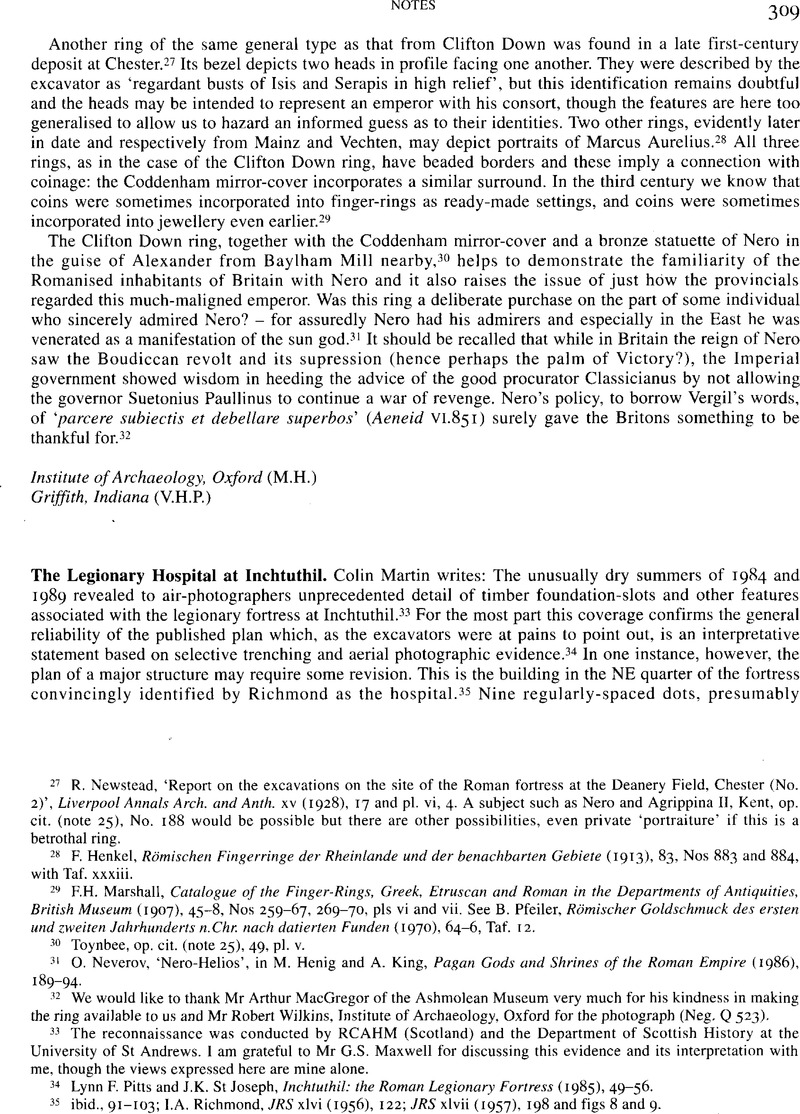No CrossRef data available.
Published online by Cambridge University Press: 09 November 2011

33 The reconnaissance was conducted by RCAHM (Scotland) and the Department of Scottish History at the University of St Andrews. I am grateful to Mr G.S. Maxwell for discussing this evidence and its interpretation with me, though the views expressed here are mine alone.
34 Lynn F. Pitts and J.K. St Joseph, Inchtuthil: the Roman Legionary Fortress (1985), 49–56.
35 ibid., 91–103; Richmond, I.A., JRS xlvi (1956), 122Google Scholar; JRS xlvii (1957), 198 and figs 8 and 9.Google Scholar
36 H. von Petrikovits, Die Innenbauten römischer Legionslager während der Prinzipatszeit (1975), 98 ff., cited by A. Johnson, Roman Forts (1983), 160.
37 Pitts and St Joseph, op. cit. (note 34), 104–5.
38 This pertinent observation was drawn to my attention by Mr Maxwell. The identification of the slot as an eaves-drip is not explicit in Pitts and St Joseph, op. cit. (note 34), but such an interpretation is implied in fig. 14 and further touched upon in discussion on p. 100.